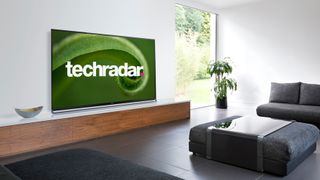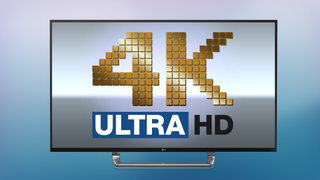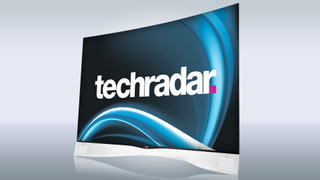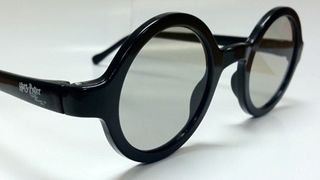TVs of the year 2014: the best new tech, brands and models
Unearthing the heroes - and zeroes - of this year's TVs

It's been a tumultuous year for TVs. Technologies like 4K, curved screens and OLED have hit big, while old favourites have faded away.
In this article, we'll look back at how the TV landscape has changed in the last 12 months, discuss all the key technologies you need to consider before buying, offer shopping tips and name the best TVs of the year.
One thing's for sure, new technologies have dramatically increased the types and shapes of TVs consumers can choose from this year, prices have plummeted again, and our approach to TV content has undergone nothing short of a revolution.
Naturally this has made buying a TV even more challenging for consumers.
But it's also put severe pressure on the big TV brands to not only keep up with the pace of change without letting standards drop, but also find new ways to stand out from the crowd.
Before getting into the new TV stuff, though, let's first pause to mourn the passing of a 'golden oldie'.
The end of plasma TVs
Why you can trust TechRadar
This year plasma technology pretty much completely died. LG and Samsung trotted out a couple of budget models in the UK to mop up any residual market (though LG let slip at a recent event that it will probably cease plasma production totally by November), but by far plasma's biggest supporter, Panasonic, totally pulled the plug on its much-loved flat panel tech.
And the more the year's gone on, the more we've found ourselves missing plasma's knack for delivering contrast-rich pictures with natural colours and sharp motion.
The demise of plasma has coincided with a disappointing rise in the number of LCD TVs that struggle to deliver the sort of contrast we expect from a modern TV – an issue which seems to be down to the growing use of IPS-type LCD panels, something we'll come back to later.

4K is here to stay
"2014 has been defined by the explosion in two ace new screen technologies: Ultra HD and curved screens"
Moving into more positive territory, 2014 has been defined by the explosion in two significant new screen technologies: 4K/Ultra High Definition resolutions, and curved screens.
Where 4K is concerned, every key brand has released multiple TVs this year with the necessary 3840 x 2160 pixels – four times the resolution of full HD TVs.
The prices for 4K TVs have more or less halved versus the debut 4K TVs from last year too, and a new 4K-friendly connection standard – HDMI 2.0 – has now been formalised.
On the content side, Netflix launched a 4K streaming service in April, with Amazon scheduled to follow suit (only on Samsung TVs initially) in October.
Samsung has now launched a HDD server containing UHD movie transfers for use with its UHD TVs, and we've finally had a Christmas 2015 date announced for the launch of 4K Blu-ray discs.
Much of the World Cup was filmed in 4K, and Sky and the BBC have both openly run 4K production and broadcasting trials.
In other words, the more 2014 has gone on, the more it's become clear that 4K is here to stay.

Curved screens are here... for now
"Only one brand has so far really pushed the curved screen format heavily and that's Samsung"
The situation with curved TVs – where screens curve away from you towards their centre - is less clear cut. For starters, only one brand has so far really pushed the curved screen format heavily and that's Samsung.
Mind you, Samsung is a major player - so much so that it really does have the muscle to bend (pun fully intended!) public opinion to its will. LG is also going curved for most of its OLED screens, and by the time you read this Sony should have launched its debut S90 curved LCD TVs for the UK (it already has a few curved models in the US). Philips launched a single curved screen at IFA too.
Early sales reports suggest that Samsung's curved TVs have outsold its flat ones by as much as 3:1, which certainly suggests there's a public appetite for curviness.
These figures may be a little skewed, though, by the fact that Samsung only puts its very top-level picture technology inside a curved TV (the HU8500 series).
We get the sense, too, that the other brands are only dipping their toes into the curved TV arena at the moment either for aesthetic reasons (the thinness you get with OLED technology is really emphasised by the curve) or because they feel they need to be seen in the market.
None have really joined Samsung in arguing the case for curved TVs radically improving the viewing experience.
As we've observed ourselves, there are advantages to watching a curved screen. But there are disadvantages too. And perhaps tellingly many of the key 'opinion makers' in the AV world appear unconvinced about the usefulness of curving TV screens. So at the time of writing we'd say that the future of curved screens in the long-term TV market seems less assured than that of 4K.

OLED is the future of TV?
"OLED TV tech is seen by many as the great hope for the future of TV"
If you've been paying attention you'll have noticed a couple of mentions of OLED technology. OLED panel technology is seen by many as the great hope for the future of TV thanks to its remarkable contrast, colour and motion-handling capabilities.
And towards the end of 2013 we would have predicted great things for OLED in 2014. However, these dreams were shattered at the 2014 Consumer Electronics Show in Las Vegas in January as almost every brand appeared to be retreating from OLED – seemingly on the grounds that it's still too expensive to make.
Thankfully, though, one brand is still carrying a torch for OLED: LG. The Korean brand has rolled out a couple of new HD panels already, and is on the verge of launching the first 4K OLED TVs.
Prices for these new 4K models are comfortably higher than the costs of same-sized 4K LED TVs – the 65-inch 65EC970V OLED will cost around £7,000, while Sony's 65X9005B 4K LED TV costs around £3,300.
But actually this isn't quite as high a price disparity as we might have feared, and certainly raises hopes for much more 'mass market' OLED pricing for 2015.
Turning next to smart TV developments this year, there have been a couple of significant ones. LG's webOS system moved the Smart TV world forward significantly with its brilliantly slick, fun, economical interface and the way it realised that you need to treat everything – even individual connections – as an app these days if you want to deliver a truly intuitive, multi-tasking TV operating environment.
We were also impressed by Panasonic's integration of both the Freetime catch-up TV system and TV Anywhere system for watching your TV on a smart device anywhere in the world.

Where has 3D gone?
"It's been noticeable how more midrange TVs have started to ditch 3D support"
One last technological development to consider is 3D - or the near death thereof.
It's been noticeable how more mid-range TVs have started to ditch 3D support, and even more tellingly, Sky recently stopped filming its Premiership football 'crown jewels' in 3D. The BBC gave up on 3D long ago, and while Hollywood is still making a few films in 3D the annual number hasn't really grown over the years, and still surprisingly few of these movies are actually filmed in 3D rather than being converted to 3D in post production.
We're not necessarily saying 3D is going to disappear completely – it will likely always be on premium TVs and there will likely continue to be a trickle of 3D movies. But it's an increasingly niche proposition that fewer and fewer households seem willing to bother with.
Current page: TV Review of Year: Introduction
Next Page TV Buying Tips for Christmas 2014Get daily insight, inspiration and deals in your inbox
Get the hottest deals available in your inbox plus news, reviews, opinion, analysis and more from the TechRadar team.
James was part of the TechRadar editorial team for eight years up until 2015 and now works in a senior position for TR's parent company Future. An experienced Content Director with a demonstrated history of working in the media production industry. Skilled in Search Engine Optimization (SEO), E-commerce Optimization, Journalism, Digital Marketing, and Social Media. James can do it all.
Most Popular

